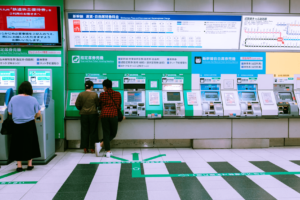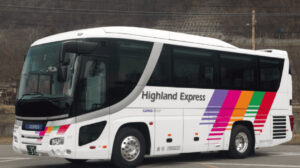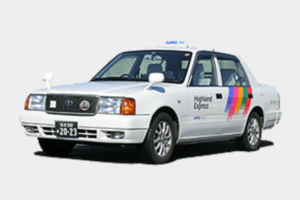

A Comparison of the Different Types of Transportation
Japan is a fantastic country that caters to all types of travelers. Whether you’re drawn to its rich history, culture, traditions, breathtaking natural beauty, or bustling modern cities, this incredible destination is sure to have something that catches your interest. However, knowing how to travel around Japan efficiently and comfortably is essential to make the most of your trip. Thankfully, Japan’s public transportation system is one of the best in the world, offering punctual, safe, and convenient services that cover most parts of the country. However, public transportation is just one of the many options for travelers exploring Japan. Consider renting a car, taxi, or leisurely bike ride depending on your needs, preferences, and budget. In this comprehensive guide, we’ll compare the various types of transportation available in Japan and their respective advantages and disadvantages so you can choose the best way to experience this fantastic country.
Trains: The Fastest and Most Comfortable Way to Travel Around Japan
Trains in Japan are a popular and efficient mode of transportation with different types available, from local trains to high-speed bullet trains like the Shinkansen. The Japan Railway Group (JR) operates most of the railway network, providing about 70% of the services. Trains are known for their cleanliness, comfort, and reliability, making them a convenient way to travel to any destination in the country. During the journey, passengers can enjoy scenic views or relax with a book or snack.
Train travel offers speed and convenience, allowing passengers to avoid traffic congestion and save time, especially when taking the Shinkansen. This high-speed train service can connect passengers to major cities in just a few hours. Train stations are generally located in city centers or near tourist attractions for easy access. Moreover, they have clear signposts and provide English announcements and displays, so passengers do not need to worry about parking, driving, or navigating.


However, the cost of train travel can be a disadvantage, especially when taking the Shinkansen, which can be expensive. Passengers may also need to pay extra for seat reservations or the more spacious and luxurious green cars. Trains can also be crowded, particularly during peak seasons, which can be stressful and uncomfortable.
If passengers plan to use the train frequently, they can consider purchasing a Japan Rail Pass. This special ticket is available to international tourists and allows unlimited travel on JR trains, including the Shinkansen, for a certain period. Passengers can choose from 7, 14, or 21 days and pay a fixed price, saving them money and the trouble of buying individual tickets or reserving seats. However, the Japan Rail Pass is not valid for some trains, such as private railways, subways, and buses, so passengers may still need to pay extra. Another option is to get an IC card, a rechargeable card that can be used to pay for most public transportation in Japan, including trains, subways, and buses. IC cards are user-friendly; passengers only need to tap them at the gates or machines.
Subways: The Cheapest and Most Accessible Way to Travel Around Japan
Subways are a practical and widely used mode of transportation in Japan, especially in big cities like Tokyo, Osaka, and Nagoya. They operate frequently, cover most urban areas, and offer fast and affordable travel. Subways are usually quicker and cheaper than trains, as they avoid traffic and have fewer stops. Subway stations are also conveniently located near major tourist attractions, shopping districts, and hotels.
One of the main benefits of taking the subway is that it is affordable and accessible. It can save you time and money, especially when traveling within the city or nearby destinations. Subways offer a comfortable and convenient travel experience, with amenities such as air conditioning, Wi-Fi, and security cameras. They are also easy to navigate with color-coded lines, English signage, and announcements.
However, subways can be crowded during peak hours when commuters and students are on the move. You may have to endure long queues or squeeze into tight spaces, which can be stressful and uncomfortable. Noise, smells, and pickpockets can also be common issues. Moreover, subways are not available in small towns or rural areas, so you may need to consider alternative modes of transportation to reach such places.
Purchasing a subway pass might make sense if you plan to use the subway frequently. It allows for unlimited travel on subways for a specific period and is available for different cities and durations. Subway passes can save time and money, as you won’t have to buy individual tickets or calculate fares. Alternatively, you can use your IC card, which can also be used for subways, trains, and buses.
Buses: The Most Flexible and Accessible Way to Travel Around Japan
Buses are often a great choice if you’re traveling around Japan, especially for short distances or remote areas. They are cheaper and more accessible than trains or subways. Bus stations are usually located near train stations, tourist attractions, or hotels, making them easy to access.
Traveling by bus offers flexibility and accessibility. Buses provide more frequent departures and fewer restrictions on luggage or pets, allowing you to travel at your own pace. Additionally, you can enjoy the scenery and atmosphere of the road or chat with the locals or other travelers. You don’t need to worry about driving, parking, or navigating, as experienced drivers drive the buses and have GPS and maps.


However, there are some downsides to traveling by bus. Buses can be slow and uncomfortable due to traffic and weather conditions. Traveling long distances or to mountainous or rural areas may take more time and effort. You may also have to deal with noise, smells, or motion sickness, which can be unpleasant. Fares, payment methods, and boarding procedures may vary depending on the company and route, which can confuse.
Consider purchasing a bus pass if you plan to travel by bus frequently. These special tickets allow unlimited use of buses for a certain period and are available for different regions and durations. They can save you money and hassle, as you don’t need to buy individual tickets or worry about change. Remember that bus passes are only valid for some buses, such as highway, express, or airport buses, so you may still need to pay extra. Another option is to use your IC card, which works on buses, trains, and subways.
Taxis: The Most Flexible and Private Way to Travel Around Japan
Taxes are a good option when traveling short distances or at night in Japan. You can find them on the street, at stands, by phone, or online. Taxis are fast and convenient and take you directly to your destination without transfers or waits. They are also safe and reliable because the government regulates them and employs professional drivers.
The main advantage of taxi travel is its flexibility and privacy. No fixed routes or timetables exist so you can travel at your own pace. Additionally, you can communicate with the driver, who may offer tips or recommendations about the local area.


However, the most significant downside of traveling by taxi is the cost. Taxis are Japan’s most expensive mode of transportation, as they charge by distance and time and may have additional fees for tolls, luggage, or night hours. You must also pay attention to the meter, the receipt, and the change, as some drivers may try to overcharge or cheat you. Lastly, finding a taxi can be challenging, especially during peak hours or in rural areas, and some drivers may need to learn to speak English or accept credit cards.
If you plan to use taxis frequently, consider using a taxi app. These mobile applications allow you to book, pay, and rate taxis online. They show you the availability, price, and location of taxis in real-time, and you can communicate with the driver through the app. Moreover, taxi apps offer discounts, coupons, and insurance, making them cheaper and safer than regular taxis. However, taxi apps are only available in some areas or for some taxis, so you may still need to use traditional taxis or other modes of transportation in some cases.
How to Choose the Best Way to Travel Around Japan
If you’re planning a trip to Japan, it’s essential to understand the transportation options available. Japan boasts a range of options, each with unique advantages and disadvantages. Whether you’re looking for speed and comfort, convenience and accessibility, flexibility and privacy, or adventure and scenery, there’s a mode of transportation that will suit your needs and budget.
Of course, there must be more than a one-size-fits-all solution for traveling around Japan. Different situations call for other modes of transportation, so planning and researching is essential. Take the time to compare costs, schedules, and availability to make an informed decision. You can also turn to online resources such as maps, guides, and reviews to help you find the best routes, deals, and insider tips.
Ultimately, the key to a successful trip is finding a way to travel that makes you happy and satisfied while allowing you to experience everything Japan offers. So don’t be afraid to be flexible and try new things! With some planning and an adventurous spirit, you will enjoy exploring all this fantastic country has to offer.
I hope this article has helped you. If you have any questions or comments, feel free to leave them below. Thanks for reading, and I’ll see you at the next one.




